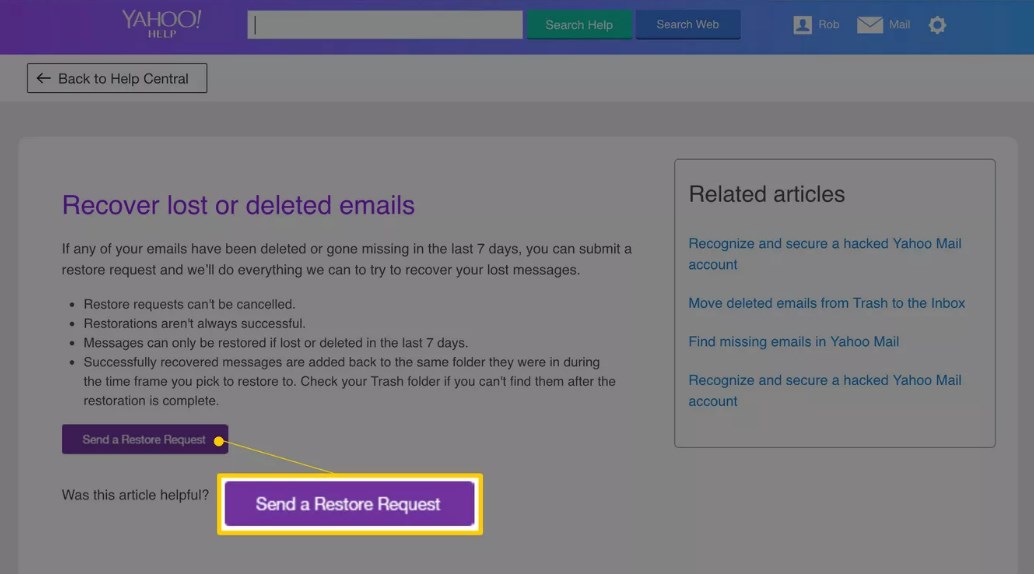

Don’t forget about the other personĪnother scenario people often forget is that email, by definition, starts off with two copies: the copy in the sender’s Sent Mail folder, and the copy received by the recipient. If you’re backing up as you should, it’s possible an email you’ve completely deleted from your desktop email program could be recovered from one of your backups. The same is true for your own backups and your desktop email program. This means even if you’ve completely deleted an email, the service could possibly recover it from the backups they took before you deleted it. However, they could get a court order to retrieve an email from their backup. If you delete an email, the service won’t retrieve it from their backups for you. They exist to protect the service, not us.

The irony is that these backups are useless to you and me. We don’t know how often or for how long, but in order to be able to recover from various types of failures, they need to have backups. That exceptional circumstance I mentioned earlier is exactly that: your online email service almost certainly backs up your account. It’s easy to overlook the impact of backing up when it comes to recovering deleted email. That means there may be a deleted copy of the old database that could be undeleted, still containing remnants of the deleted message. The complication is that the compact function may copy the database to a new file and simply delete the old one. Using a “compact” operation, when the program provides it, removes the unused space so the database no longer has the message. Deleted mail might still exist in one form or another within the database for some time. In the case of a PST, for example, when a message is deleted it’s simply marked as deleted, but not overwritten until the space it was using is needed. Programs using database files, like Microsoft Office Outlook’s PST files, can be much more complex. When the email program keeps individual messages as individual files, it’s pretty safe to assume they behave exactly like deleted files, because they are deleted files. What happens when trash gets emptied varies a great deal. Some use a fairly complex database in a single file (see below for an explanation) some use a less complex file for each folder and others use your operating system’s disk structure, mapping email folders to disk folders and storing individual email messages as individual files. report this ad Emptying trash in programs: it variesĭesktop email programs store email on your computer in a variety of different ways. There’s no getting it back, except possibly in some exceptional circumstances I’ll talk about in a moment. The practical effect for users, though, is that once an email has been removed from an online service’s trash folder, it’s gone. Chances are it varies from service to service, and in fact might even change over time they’re not obligated to tell us. It’s hidden behind the service provider’s interface.

When it comes to online services, we really don’t know how trash is handled. The real question is, what happens when deleted emails are actually deleted from the trash? Emptying trash online: we just don’t know This gives you a month to change your mind and recover anything you didn’t mean to delete.ĭesktop email programs often have a setting controlling what happens to trash, so you can decide whether it’s left alone until you explicitly empty it, or emptied automatically when you exit the program. Most online services automatically delete email from trash after some amount of time - usually 30 days. What happens next depends on the program or service. Instead, the message is moved to a special folder, typically called “trash” or “deleted items”. In most email programs and web interfaces, deleting a message doesn’t actually delete it. When deleted emails aren’t really deleted And, of course, the person at the other end of the message - sender or recipient - could also have a copy. Depending on the situation, backups (either your own or those of the service you use) might be a way to recover. In a desktop mail program, there are several ways a permanently deleted email might still be recoverable. With an online service, there’s no way to know what “permanent” means. Both can use recycle or trash bins, and both permanently delete when the bin is emptied. Deleting email is similar to deleting a file on disk.


 0 kommentar(er)
0 kommentar(er)
